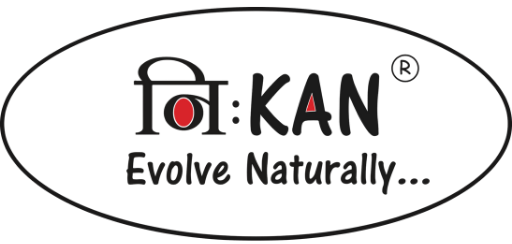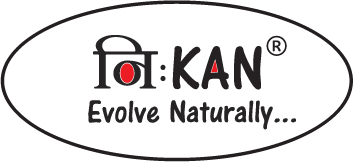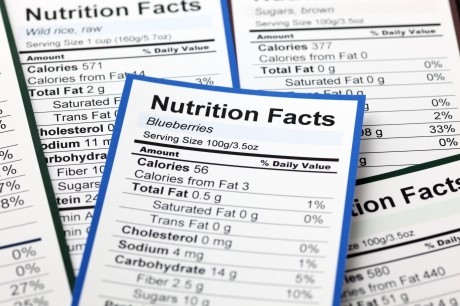Limited time and resources often make grocery shopping a process performed in a hurry. It is no surprise that consumers miss paying attention to what is written on food packaging. Nutrition labels, ingredient labels, and even product packaging can reveal a lot about what people willingly put into their bodies.
Food labels notify consumers about the nutritional values and ingredients, manufacturers, health claims, possible allergens, or some other potentially threatening health information. All this data enables people to decide whether they can consume a certain product.
Purpose: Food labelling intends to protect the health and well-being of consumers. It helps them to learn about:
- The ingredients present in the food that you consume
- Percentage of each ingredient
- Quantity of vitamins, minerals, and other nutrients a food contains. This information may be given either by weight or as a percentage.
- The ingredients that can induce allergies
- The environmental parameters under which certain ingredients are produced (e.g., organic, free-range)
What are the benefits of food labels?
Food labels are a legal requirement, and they are important for many reasons. They guide consumers towards well-versed food, store it properly, and use it safely. Food labels allow consumers to acquire knowledge about the food they want to purchase.
If consumers follow the information provided on food labels, it can help them to prevent unnecessary food-borne illnesses and allergic reactions. Food labels also give an idea of the quality of a product. Most food packaging labels contain a separate list of ingredients used to manufacture a product, including preservatives.
With international trade evolving over time, it is becoming even more challenging for us to identify the source from where the food originates. Trustworthy labels are crucial in filling this gap. The Food and Agriculture Organization (FAO) and the World Health Organization (WHO) work together through the Codex Alimentarius Commission to establish the global standards for food labelling.
These are the key advantages of food labels:
Optimizes health – Labels highlight food composition along with the concentrations of vitamins, minerals, calories, fats, etc. With labels, you can monitor your nutrient intake and body weight. All these actions can help prevent illnesses, like diabetes and certain types of heart disease.
Retains food quality – Every year, many people get sick and perish due to consuming food contaminated with bacteria, viruses, parasites, toxins, and chemicals. Labels provide warnings and vital information like storage conditions, and cooking instructions, which are essential for keeping food safe from microbial contamination and spoilage.
Prevents you from buying fake products – A major objective of food labelling is to avoid fraud. Without internationally guaranteed labels, food vendors could purposely deceive consumers through false representations on packaging.
Specify critical ingredients –The most common allergens in food items include peanuts, soybeans, milk, eggs, fish, wheat, etc. If you are unaware of the ingredients of a product, you could risk having an allergy or a severe reaction. Food labels inform consumers about special dietary requirements and whether or not they contain ingredients that they should avoid.
Avoids food wastage – Food labels can prevent food wastage. Marking manufacturing and expiry dates informs consumers about product shelf life. This vital information can prevent sickness from eating expired food items.
Supports local food producers – Certain food labels mention the source, for example, Darjeeling tea (India) or soya sauce (Japan), etc. Such food items can inculcate interest among customers, thereby adding more value to the product and the manufacturer. Labelling the food source also enables consumers to identify local food products and support them.
Nutrition claims on food labels
- Unlike the assumption that foods labelled as ‘light’ are healthy, the label may actually denote the texture, colour, or taste of the product. The ingredients that make the food ‘light’ must be mentioned on the label.
- Some foods can be rich in fat and can contribute to weight gain if used too generously. So, the makers must mention the percentage of fat used along with the maximum limit.
- ‘Baked not fried’ sounds very healthy, but it may still have fat – check the nutrition information to be sure.
Allergens on food labels
Food labels are important for people with food allergies or any kind of intolerance. The main ingredients that may cause severe reactions must be stated on the label, even if they are included in minute quantities. Common allergens in food items include:
- Peanuts and other nuts
- Fish and shellfish
- Milk
- Eggs
- Wheat
- Refined flour
- Sesame seeds
- Soy
Gluten labelling
Gluten-containing cereals, such as wheat, barley, rye, oats, and spelt, also need to be stated on food labels for people with allergies, such as coeliac disease and gluten sensitivity.
Nutrition information panel (NIP)
The nutrition information panel (NIP) indicates the quantity of several nutrients a food contains per serve, as well as per 100 g or 100 ml. The serving size of a food item must be mentioned by the manufacturer, which is likely to differ among various products.
There are a few exceptions to the labelling requirements, such as:
- Small packages and foods like herbs, spices, salts, tea and coffee, etc.
- Single ingredient foods, such as fresh fruit, herbs vegetables, water etc.
- Food sold at events or parties
- Food sold unpackaged or from street vendors
- Food produced and packed at the point of sale
Nutritional labelling provides consumers with the information that can be used to make knowledgeable and healthier food choices. It is especially beneficial for people following special diets, enabling them to select suitable foods compatible with their health conditions.
Bottom line
The ingredient list on food items can guide you to choosing the right items. Missing out on reading the ingredients is like not playing an active role in your wellness, and failing to do so makes you susceptible to health ailments. Information is power, and it can help you take charge of your own health.
At NihKan, we follow labelling practices as per International Standards of USFDA & UK government. Our products specify the percentage of ingredients are mentioned along with their nutritional values per serving sizes, allergens, storage conditions, etc.





